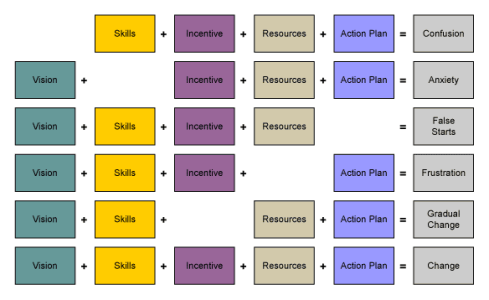I’ve seen it time and time again. An organization has a new technology, often joined with a new process and vision for processing, customer service, data alignment, sales, etc. The knock comes on L & D’s door, and we are thrilled to be able to get in on a new initiative without the baggage of poor performance leading the request.
But just as we should pause and assess if training is the part of the solution to substandard performance or a new change initiative, we need to also pause to think about the appropriate timing and type of training that will advance the strategy initiative. While it might seem counter-intuitive to those of us in the instructional design and training game, we need to think about training as an essential element in the organizational kitchen remodel — a part of a well-designed program, but not the driver.
OK, I’m not entirely sure a kitchen is the best analogy, but let that marinate with me for a moment. A kitchen needs a workflow plan, a place to store fresh and nonperishable items, ample space to store tools and cooking utensils, and a set of good cook books (explicit knowledge), at least until the cook moves through competence and proficiency to become an expert intuitive gastro-artist (implicit knowledge).
So, training can carry the novice cook along the path to competence, and even proficiency. However, if the goal is to build expertise, training can’t carry the load the full distance. Similarly, the training program, no matter how well designed and implemented, can’t deliver the tools, materials and setup necessary to get the anticipated results.
Cathy Moore has done some excellent work on how to evaluate the need for training to address performance issues. But what I’m suggesting here is to take that to another elevation: Even when training is part of the issue, are the conditions for applicable success present? Seen this way, each training design should be a mini (or full-blown) change management program. Per standard practice of change management, skills are an essential ingredient. But so too are organizational support, vision and incentives to follow through.

Complex Change Management Matrix
So, if you are already in the discussion that Moore (and I) suggests, take it to the next logical step: How does training fit into the change the organization wishes to see?
We don’t spend the money to build a beautiful kitchen without the hope that we’ll become better cooks. But design and appliances don’t get us there. Neither will skills alone without the proper tools and support for experimentation, failure and improvement.



